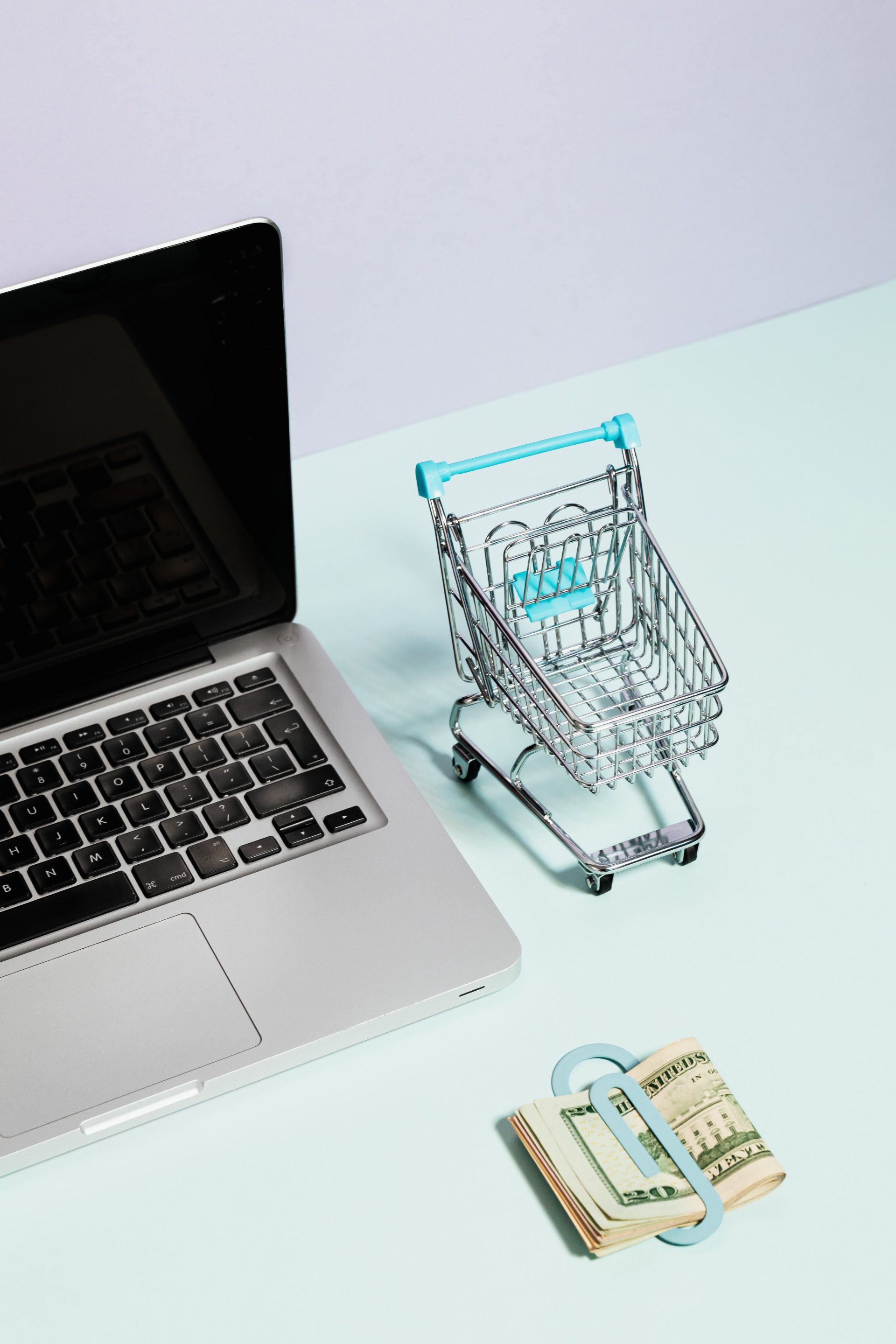Get your ecommerce site ready for Black Friday and Christmas
When Black Friday comes around in November, sometimes it can feel like the whole world has gone mad. But, love it or hate it, as an ecommerce retailer, (even a very small one), you need to be a part of it.

Thirty per cent of all retail sales take place between Black Friday and Christmas.
Black Friday is the first Friday after Thanksgiving, which us Brits can take to mean the last Friday in November. In 2021 it will take place on 26th November and in 2022 it will take place on 25th November.
So, there is just a month between Black Friday and Christmas Day to capitalise on nearly a third of your annual retail sales.
Is your ecommerce site up for the challenge? If it isn’t, it’s time to get it ready now.
Start early
When you’re planning ahead, it’s remarkable how quickly the time seems to go. One minute, we’re enjoying the last warmth of summer and the next minute it’s already November.
So, as soon as you can, start thinking about your Black Friday deals. Will they be sitewide? Will they be on specific products? Will you offer other incentives, such as free delivery?
The key is always to get ahead of the competition and make as many sales as you can. If you’ve got unique products, focus on those. If your competitors stock something similar to you, consider a bigger price cut, if you can afford it.
Once you’ve planned your deals, how will you let shoppers know about them? Prepare your advertising and social media posts in advance, so they are ready to go just ahead of Black Friday.
Check your site
It’s always a good idea to check your site’s speed at this early stage too. And can it cope with an increase of traffic? If your site is too slow or crashes due to extra traffic, your Black Friday won’t bring the extra sales you are hoping for.
If you don’t have the time or the skills to sort out any problems yourself, get in touch with a local company or freelancer who can help you out.
Use blog posts and video
Most ecommerce sites will have a blog alongside their sales pages. Many sites will also use video. Both blog posts and video can bring visitors to your site.
Used well, your blog or video can give visitors valuable information, which helps your business come across as one which is knowledgeable and can be trusted. Ultimately, this helps build a relationship and gives people confidence to buy from you.
You can use your blog and video to gently point visitors in the direction of your products. Digital marketing guru, Neil Patel, recommends creating something like a comparison guide. Rather than just writing about the particular product you want them to buy, you can offer them the pros and cons of a variety of similar products, so they feel like you are supporting them to make an informed decision, rather than just advertising something. Of course, you can still make your own product sound particularly good!
Get extra mileage out of this content by sharing it on social media to increase your reach and engage with your followers.
Decide which products to feature
Even if you’re offering a sitewide promotion, like 20% off all stock, it’s important to feature products which will boost sales and help your brand stand out.
Black Friday and Christmas are about increasing sales and giving your customers a bargain, but they are also about shifting the right stock at the right time! Christmas gift items look fantastic in November and December, but they lose some of their charm if you’ve still got them lying around taking up valuable space in April.
So it is particularly important to focus on any seasonal items and make sure you give them top billing on your site and through your ads and social media (whether paid, organic or both). Make full use of festive messages and imagery to make them irresistible to shoppers.
Check your product pages
You might have some great deals, but there’s a lot of competition out there and potential customers aren’t going to buy if your product pages are shoddy.
You need to check both the appearance and the functioning of your product pages.
Do your photos really capture the product fully? Does your copy really sell the its benefits? Have you got all the essential information such as size, colour and material covered?
Get someone who is less internet savvy to check that they can find all the information they need and that it is easy to select an item and add it to their basket. If there are any glitches, it’s essential to get them sorted out before Black Friday, particularly for your featured products.
Make it festive
When shoppers are in a festive mood, they are more likely to buy from a site which is also in a festive mood!
So how can you make your site more festive for Black Friday and Christmas shopping?
Make sure both your images and your copy convey your excitement for Christmas. You can keep it simple with an updated seasonal header or banner and also update any hero images and key product images. Think about the colour, the lighting and props – use red, green and gold, with the hint of fairy lights, a Christmas tree or a roaring fire in the background.
You don’t need to do it for every single product, but it’s definitely worth the extra effort for the products you are keen to sell over the festive period.

Create your own gift guide
In the run-up to Christmas, most shoppers will be doing Christmas shopping. And while some people love it and will know exactly what they want to buy, others will struggle and will need a helping hand.
You know your site and product range better than anyone. Think about your products and who they would appeal to. Do you have gifts for babies and toddlers? Teenagers? Millennials? Gardeners? Foodies?
Group your products together into gift guides which make it easy for people to shop for their teenage nephew, their elderly mother-in-law or their best friend’s new baby.
If you’ve got the right products and you’re making helpful suggestions, why would a Christmas shopper bother going elsewhere?
Personalise your email offers
Many Black Friday and Christmas shoppers will check out their emails for interesting offers before visiting an ecommerce site. An email offering 20% off is good, but it will be up against a lot of other emails offering 20% off in a person’s inbox.
So use the information you have about people on your email list to target them with offers that will really interest them. If a customer has only bought babywear from you, there’s no point in sharing your offers on women’s fashion and if they are a dog lover, there’s no need to share offers on cat gifts.
Follow up abandoned sales
According to Shopify, around 70% of online shopping baskets are abandoned before checkout. With more people shopping, the overall figure is even higher in December.
People abandon their shopping baskets for a number of reasons:
· They are using them as a sort of wishlist
· They forgot to checkout their purchases
· They stopped shopping to check prices elsewhere
· They found the checkout process too long and complicated
·
They weren’t happy with the delivery costs or time
Statista found that, after abandoning their shopping: 31% purchased from the same website at a later date; 26% bought from a different online retailer; 23% were never serious about buying in the first place and didn’t buy; and eight per cent went into a physical store to buy.
So it is important to get those sales back on track and keep shoppers away from your competitors. Send an automated email reminding shoppers about their abandoned baskets. You can ask if they need any help with anything and even throw in an extra offer to encourage them to complete the sale.
The good news is that, according to Campaign Monitor, 41% of abandoned basket emails are opened – far higher than other marketing emails.

A clear return policy
A free and easy-to-use return policy is always important for an ecommerce retailer, and even more so when shopping for gifts.
Many people will check the return policy before they even consider making a purchase, so if your item is available elsewhere with free returns, you are going to lose a potential sale.
Don’t just have a good return policy, make it very easy to find on your website. Make it clear on your home page and product pages that you offer hassle-free, free returns.
Consider extending the return period to 60 or even 90 days for the festive period, as people often start their Christmas shopping in October. This means you can get some sales in early, and customers can buy with confidence that their friends and family can return any unsuitable gifts.
Don’t forget customer service
More website traffic and more sales also means more queries from shoppers, so make sure you have someone to answer them!
A chatbot on your site is an easy way to deal with most basic questions, but it also makes sense to have staff available to answer any more niche or complex queries. A quick answer to a question from someone who is friendly and knowledgeable, can help to save a sale which might otherwise be lost to a competitor.
Check your checkout
Your customers have come this far – they’ve got items in their basket and they’re ready to buy. You don’t want to lose them now. But is your checkout process as smooth as it should be?
Get your not-so-internet-savvy friend to help again. Are the steps easy to follow? Are you asking for too much unnecessary information?
If a shopper gets confused and can’t see what to click next or doesn’t want to add their address to your site for a second time, you run the risk of losing them.
To make the most of Black Friday and Christmas sales, it is important to really optimise your checkout process, so it is as smooth and easy to follow as possible.
By starting early and taking some time to check your site, smooth out any glitches and update your advertising and social media, your ecommerce site will be ready for your best Christmas and Black Friday ever.
More Posts.







